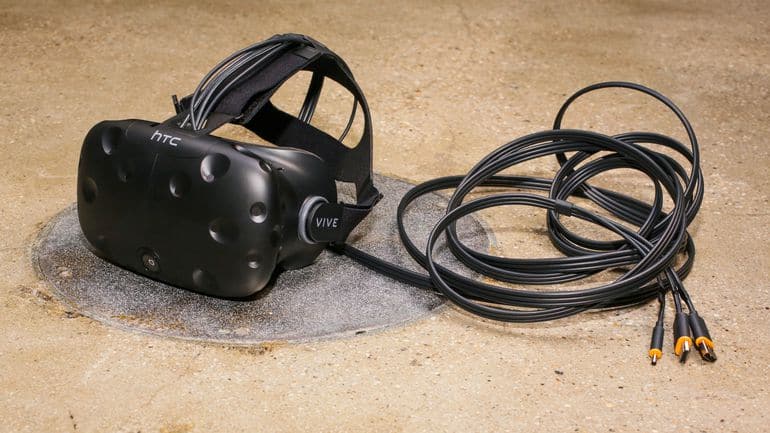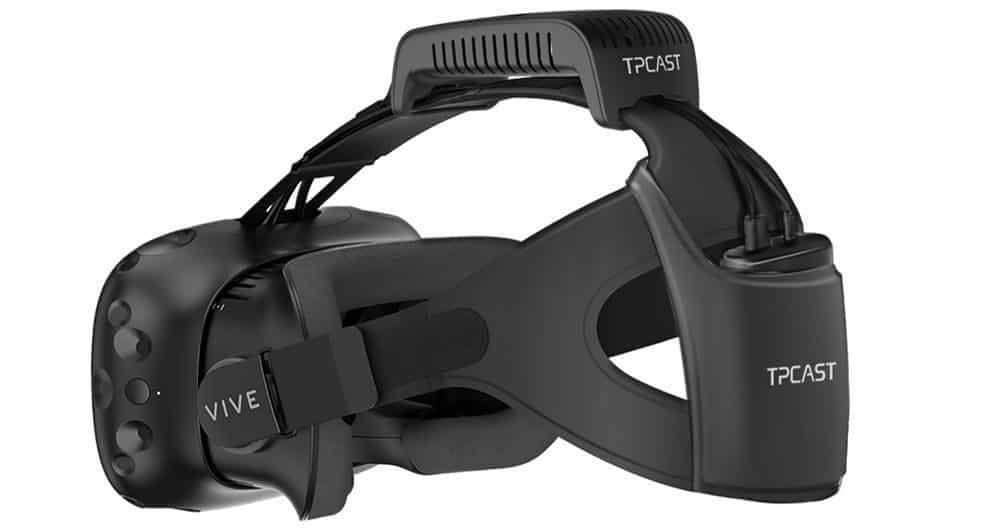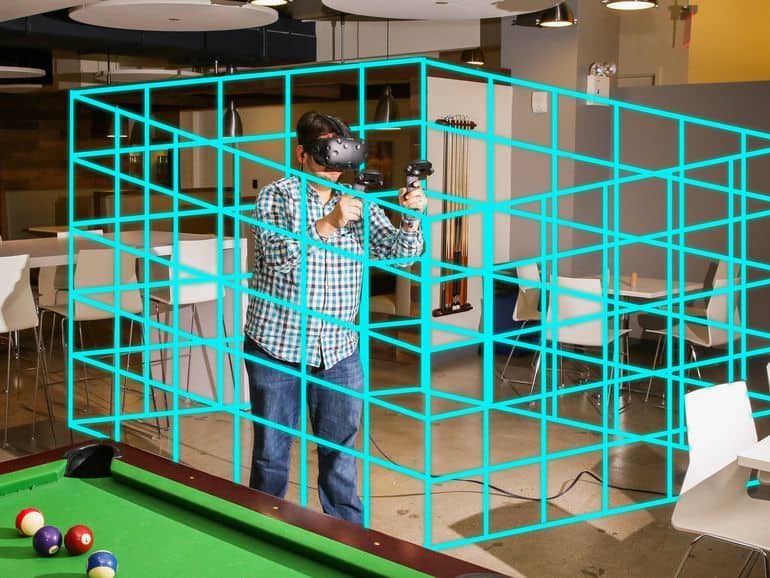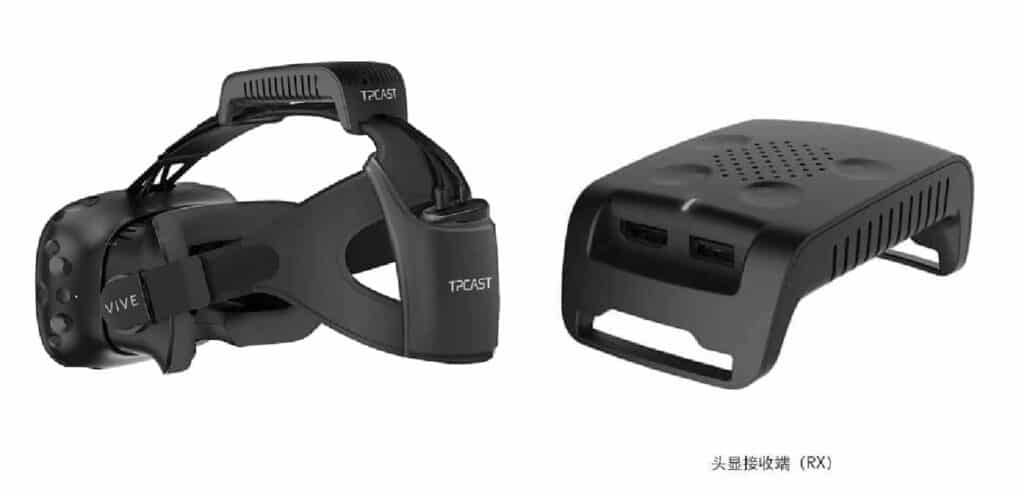The new HTC Vive Wireless VR Kit sold out yesterday in 18 minutes. We’ve always said people want VR without cables. Mobile VR is self-contained but HTC just made high-end immersive experiences tether free.
This is the future of Virtual Reality – full freedom of movement.

The TPCAST addon
Vive X company TPCAST offered the $220 device through a Chinese website. Priority went to current Vive owners (they asked for serial numbers). The unit includes a wireless transmitter that fits on the top of your Vive headset. A battery pack to power the unit attaches to the back of the headset strap.
Alvin W. Graylin, a Regional President of Vive at HTC, said a longer battery life version will be available but not in the first production run. The unit will ship in Q1 of 2017.

Here’s the details from UpLoadVR:
TPCAST’s product is an accessory that attaches to the Vive and wirelessly connects to a PC, allowing you to play any Vive game without having to physically tether the headset to the machine. Graylin told us that there was “no noticeable difference” when using the kit compared to a regular Vive, though we haven’t been able to go hands-on yet to verify that for ourselves. A translation of TPCAST’s website notes that the kit has a “lowest latency” of 15ms, however.
HTC Vive Wireless VR is the future

HTC has a winning combination here – a way to cut the cord while still keeping you in the boundaries of a virtual space. The latter is done through their Room Scale feature which throws up a virtual grid when you get close to the preset boundaries. Right now, the TPCAST device is an add-on. In the future, it will be standard. According to Ars Technica, Oculus is also working on a wireless VR headset with inside-out tracking.
Does this impact Mobile VR solutions? Their selling point has always been full freedom of movement (with the trade-off in the quality of the experience). For now, Vive is still an expensive piece of hardware – requiring an even more expensive computer. So Google and others are safe for now. But as high-end VR adopts wireless solutions and hardware prices plunge, the two solutions will merge.
In the end, all VR headsets will be cable free. It will just be a question of what you want in features and how much you are willing to pay.
The move toward high-end wireless VR headsets was already underway. Take a look at Intel’s Project Alloy. But that’s a longer term project while Vive is already on the market.
The HTC Vive wireless VR device is a game-changer. And in no small measure, a glimpse into the future of Virtual Reality.

Emory Craig is a writer, speaker, and consultant specializing in virtual reality (VR) and generative AI. With a rich background in art, new media, and higher education, he is a sought-after speaker at international conferences. Emory shares unique insights on innovation and collaborates with universities, nonprofits, businesses, and international organizations to develop transformative initiatives in XR, GenAI, and digital ethics. Passionate about harnessing the potential of cutting-edge technologies, he explores the ethical ramifications of blending the real with the virtual, sparking meaningful conversations about the future of human experience in an increasingly interconnected world.

